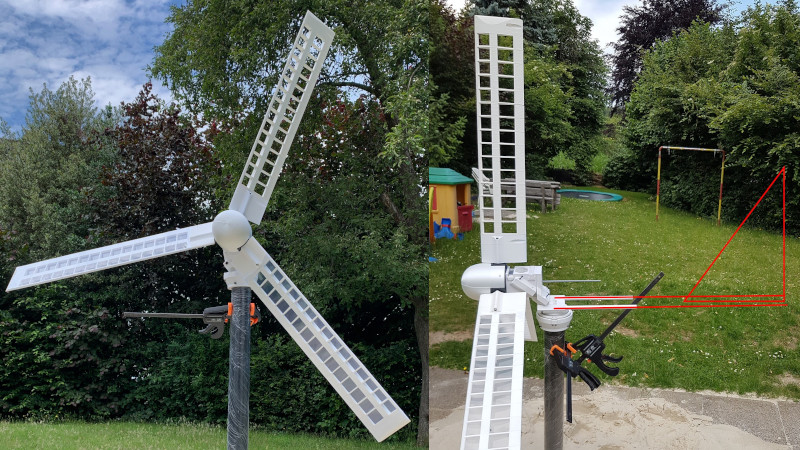Wind turbines are a great source of renewable energy, and a great DIY project, too. They can be built with all kinds of materials and the barrier for entry is low for the beginner. [Fab] has built just such a device, taking advantage of modern construction techniques, and dubbed it the WinDIY.
The WinDIY design is mostly 3D printed, with a familiar three-bladed design. The diameter of the rotor is 1.2 m, meaning that braking and regulating the turbine is required for safety in high winds. [Fab] is aiming to achieve this control with a combination of mechanical and electronic braking, as well as variable-pitch blades. The benefit of 3D printing the design is it allows iterations to be made quickly, particularly of parts with complex geometries that would be too time-consuming or expensive to machine otherwise.
[Fab]’s writeup goes into great detail on topics like the design of the pitch control systems and other minutae, which should serve as a great reference for anyone else working on a similar project. If you’re looking for something with more of a sci-fi future vibe, consider attempting a vertical-axis build instead.



















I don’t know what “HAWT” means and the post doesn’t say. So I went searching the web for a picture or diagram to explain it. Now I know.
I’ll be in my bunk.
From the context of this article, I assume it stands for “horizontal axis wind turbine”, but I read it as “extremely sexually appealing, via a deliberate misspelling of ‘hot'” at first.
It’s either a “horizontal axis wind turbine wind turbine,” which would be a horrible abuse of the language, or an “extremely sexually appealing wind turbine.” I’m gonna give Lewin’s English cromulence the benefit of the doubt and conclude that he’s got a kink for rotating machinery.
Perhaps the intent of the title is to really annoy those who object to “ATM machine”, “PIN number”, “FM modulation”, and the like?
If that is the case, the author has scored massively.
Straight blades without any taper or twist are not too efficient. The pitch and blade width needs continuous variation along the blade length to optimize it.
Hey Gregg,
you are absolutely right. I want to optimize this in the future. Thats why I made the wing easy repacable. You just have to remove two screws and the whole wing can be exchanged. I did look in between for a software to simulate such a blade and find the best shape. Sadly there are just (expensive) non free softwares available to simulate such specific stuff. Very open for any input about that topic. :)
I think PROPID could work for designing a more complex blade: https://m-selig.ae.illinois.edu/propid.html. It’s been 12+ years since I used it, so there may be better options.
Qblade is a free option you may used to optimize it
Qblade indeed.
I work in commercial crossflow tidal turbines and we use Qblade as well. We have more resources than a hobbyist of course so we also use 2D and 3D CFD however that does not diminish Qblade. It’s certainly been extremely useful in narrowing down the options to examine with CFD. Profile, taper, diameter, twist etc. etc.
For HAWT’s, Qblade would do well in giving good data, for VAWT’s we trust is more qualitative comparisons.
Thanks a lot! Qblade looks very promissing. Will dig into this as soon as i finished the first design of the turbine. :)
You can also read more about that part here: https://hackaday.io/project/172328/log/179141-windy-wing-mark-3-a-modular-easy-replaceable-and-scalable-blade
I prefer the old-school approach that the folks at https://www.otherpower.com/ use. I especially like their older projects like the Wood 103 project for beginners…